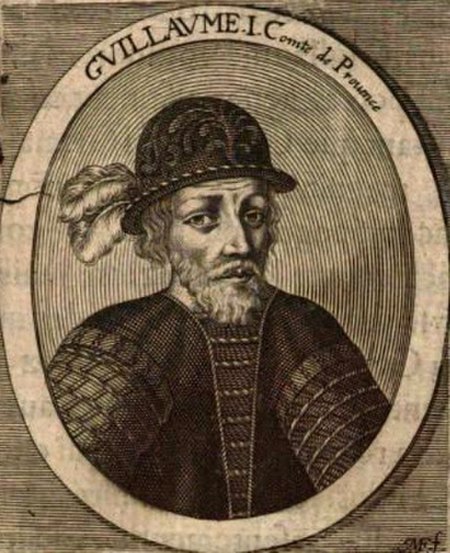John Elphinstone, 2nd Lord Balmerino
|
Read other articles:

Visual effect consisting of a drawing element which looks like the shadow of an object A red rectangle casting a drop shadow over a wood-like background In graphic design and computer graphics, a drop shadow is a visual effect consisting of a drawing element which looks like the shadow of an object, giving the impression that the object is raised above the objects behind it. The drop shadow is often used for elements of a graphical user interface such as windows or menus, and for simple text. Th…

Stockport Branch CanalMany of the canal's structures have survived, including this bridge at Abbey Hey LaneSpecificationsStatustwo fifths a footpathHistoryOriginal ownerAshton Canal CompanyDate of act1793Date of first use1797Date closed1962GeographyStart pointClaytonEnd pointStockportConnects toAshton Canal vteStockport Canal Legend Ashton Canal locks 10 + 11 A635 Ashton Old Road bridge Gorton Stn aqueduct Maintenance arm Abbey Hey Lane bridge Hyde Road station and bridge A57 Hyde Road bridge Re…

Questa voce sugli argomenti arene di pallacanestro e palazzetti di pallavolo è solo un abbozzo. Contribuisci a migliorarla secondo le convenzioni di Wikipedia. Sportski centar MoračaСпортски центар Морача Informazioni generaliStato Montenegro UbicazionePodgorica Inizio lavori1978 Inaugurazione1978 Ristrutturazione2005 ProprietarioPodgorica Informazioni tecnichePosti a sedere6.000[1] StrutturaArena Mat. del terrenoparquet Uso e beneficiariPallacanestro …

烏克蘭總理Прем'єр-міністр України烏克蘭國徽現任杰尼斯·什米加尔自2020年3月4日任命者烏克蘭總統任期總統任命首任維托爾德·福金设立1991年11月后继职位無网站www.kmu.gov.ua/control/en/(英文) 乌克兰 乌克兰政府与政治系列条目 宪法 政府 总统 弗拉基米尔·泽连斯基 總統辦公室 国家安全与国防事务委员会 总统代表(英语:Representatives of the President of Ukraine) 总理…

يفتقر محتوى هذه المقالة إلى الاستشهاد بمصادر. فضلاً، ساهم في تطوير هذه المقالة من خلال إضافة مصادر موثوق بها. أي معلومات غير موثقة يمكن التشكيك بها وإزالتها. (مارس 2016) مريشيد منطقة تابعة لمدينة الفجيرة سميت بهذا الاسم نسبة إلى جبل مريشيد العظيم. تشتهر مريشيد بمبارزت الثيران أ…

Frazione in Tuscany, ItalyMontegioviFrazioneView of MontegioviMontegioviLocation of Montegiovi in ItalyCoordinates: 42°54′39″N 11°31′15″E / 42.91083°N 11.52083°E / 42.91083; 11.52083Country ItalyRegion TuscanyProvinceGrosseto (GR)ComuneCastel del PianoElevation487 m (1,598 ft)Population (2011) • Total175DemonymMontegiovesiTime zoneUTC+1 (CET) • Summer (DST)UTC+2 (CEST)Postal code58030Dialing code(+39) 0…

Ancient Greek poet of the archaic period This article is about the ancient Greek poet. For the computer application, see Hesiod (name service). For the crater on Mercury, see Hesiod (crater). Hesiodos redirects here. For the asteroid, see 8550 Hesiodos. Hesiodus redirects here. For the crater on the Moon, see Hesiodus (crater). HesiodNative nameἩσίοδοςBornCyme, Aeolis(now Aliağa, İzmir, Turkey)DiedAscraOccupationPoetphilosopherfarmerLanguageAncient Greek Hesiod (/ˈhiːsiəd/ HEE-see-�…

Oldest gorilla in the world FatouFatou in 2018SpeciesLowland gorillaBorn (1957-01-01) January 1, 1957 (age 67)West AfricaResidenceBerlin Zoo Fatou is a gorilla residing at Berlin Zoo, Germany. She was born on January 1, 1957, in the wild, and was brought from West Africa to France by a sailor in 1959. She was then acquired by the Berlin Zoo. On October 30, 1974, she gave birth to the first gorilla to be raised in Berlin, Dufte.[1] Since the death of Trudy on 24 July 2019, she became…

Prejudice or discrimination against individuals based on height Part of a series onDiscrimination Forms Institutional Structural Statistical Taste-based Attributes Age Caste Class Dialect Disability Genetic Hair texture Height Language Looks Mental disorder Race / Ethnicity Skin color Scientific racism Rank Sex Sexual orientation Species Size Viewpoint Social Arophobia Acephobia Adultism Anti-albinism Anti-autism Anti-homelessness Anti-drug addicts Anti-intellectualism Anti-intersex Ant…

Pejorative term for interracial relationships This article may be too long to read and navigate comfortably. Consider splitting content into sub-articles, condensing it, or adding subheadings. Please discuss this issue on the article's talk page. (October 2022) Race History Historical concepts Biblical terminology for race Society Color terminology Race relations Racialization Racism (scientific racism) Racial equality Racial politics Sociology of race Race and... Crime (United Kingdom, United S…

Asian Nigerians are Nigerian citizens whose ancestry lies within the continent of Asia. It also refers to Asian-born persons currently living in Nigeria. By mid-2008, Filipino residents in the country had increased to an estimated 4,500, up from 3,790 in December 2005.[citation needed] There is a large population of Chinese people in Nigeria which comprise Chinese expatriates and descendants born in Nigeria with Chinese ancestry. As at 2012, there are approximately 20,000 Chinese in Nige…

الرهبنة والرهبانية في اللغة العربية تعني التخلي عن الدنيا والزهد فيها والابتعاد عن البشر والتفرغ للعبادة.[1][2] اقرأ أيضاً سيسترسية المراجع ^ معنى رهبنة في معجم المعاني الجامع. المعاني. مؤرشف من الأصل في 15 ديسمبر 2019. اطلع عليه بتاريخ 5 سبتمبر / أيلول 2015. {{استشهاد ويب}}: تح…

Island in the Great Salt Lake in Utah, United States For another island, see Lake Powell. Antelope Island State ParkPa'ri-bi-naView from Buffalo Point, Antelope IslandMap of Antelope Island State ParkLocationDavis County, Utah, United StatesCoordinates40°57′30″N 112°12′50″W / 40.95833°N 112.21389°W / 40.95833; -112.21389Length24 km (15 mi)Width7.8 km (4.8 mi)Area109 km2 (42 sq mi)Elevation5,325 ft (1,623 m)[1 …

Church of a singular female goddess Church of AphroditeGleb Botkin used this symbol of Aphrodite on the vestments for his Church of Aphrodite.Formationc. 1939TypeReligious organizationPurposestructural Monotheistic Church, based on a singular female goddess, who is named after Aphrodite, the ancient Greek love goddess.HeadquartersCharlottesville, Virginia, USLocation United States The Church of Aphrodite was a religious group founded in 1939 by Gleb Botkin, a Russian émigré to the U…

Seconda guerra d'indipendenzaparte del RisorgimentoNapoleone III (in primo piano) e Vittorio Emanuele II entrano a Milano l'8 giugno 1859Data27 aprile 1859 - 12 luglio 1859 LuogoRegno Lombardo-Veneto e Regno di Sardegna Casus belliAlleanza sardo-francese.Ultimatum dell'Austria al Regno di Sardegna. EsitoArmistizio di Villafranca.Vittoria di Francia e Regno di Sardegna. Modifiche territorialiAnnessione della Lombardia al Regno di Sardegna. Schieramenti Francia Regno di Sardegna Imp…

Local government elections in Cheshire, England Cheshire East Council elections are held every four years. Cheshire East Council is the local authority for the unitary authority of Cheshire East in Cheshire, England. Since the last boundary changes in 2011, 82 councillors have been elected from 52 wards.[1] Council elections 2008 Cheshire East Council election 2011 Cheshire East Council election (new ward boundaries)[1] 2015 Cheshire East Council election 2019 Cheshire East Counc…

Guillaume I dari Provence Guillaume I (tahun 950 – 993, setelah 29 Agustus), disebut sang Pembebas, merupakan seorang Pangeran Provence dari tahun 968 sampai abdikasinya. Pada tahun 975 atau 979, ia mengambil gelar marchio atau margrave. Ia kerap dianggap sebagai pendiri dari provinsi Provence. Ia dan abangnya Rotboald II, putra Boson II dari Arles dan Constance dari Viennois, putri Charles-Constantin, keduanya memiliki gelar comes atau pangeran bersamaan, namun tidak jelas apabila mereka pang…

Football match1888 FA Cup finalWest Bromwich Albion, winning sideEvent1887–88 FA Cup West BromwichAlbion PrestonNorth End 2 1 Date24 March 1888VenueKennington Oval, LondonRefereeFrancis MarindinAttendance19,000← 1887 1889 → The 1888 FA Cup final was contested by West Bromwich Albion and Preston North End at the Kennington Oval. Preston were strong favourites for the Cup, having set a record which still stands today by beating Hyde 26–0 in the first round, and were so confident of…

Elm cultivar Ulmus × hollandica 'Haarlemensis''Haarlemensis' before 1912Hybrid parentageU. glabra × U. minorCultivar'Haarlemensis'OriginNetherlands The elm cultivar Ulmus × hollandica 'Haarlemensis', said to have been grown from seed c.1880 from a hybrid parent tree, was first listed by Springer as U. campestris haarlemensis in 1912.[1][2] Description A slow-growing tree, forming an unbroken, broad pyramidal crown, with small, glossy, dark-green leaves persisting for several w…

Filipino dessert of small rice balls in coconut milk Pinaltok or Bilo-biloBilo-biloAlternative namesbilu-bilo, pinaltok, binignit, paradusdos, pinindot, ginataang bilo-bilo, ginataang halo-halo, tambo-tambongCourseDessertPlace of originPhilippinesServing temperatureHot or coldMain ingredientsSticky rice coconut milk, sugar, saba, taro, sweet potato, pearl sago, landang, pandan leaves Media: Pinaltok or Bilo-bilo Pinaltok or Bilo-bilo is a Filipino dessert made of small glutinous balls …

